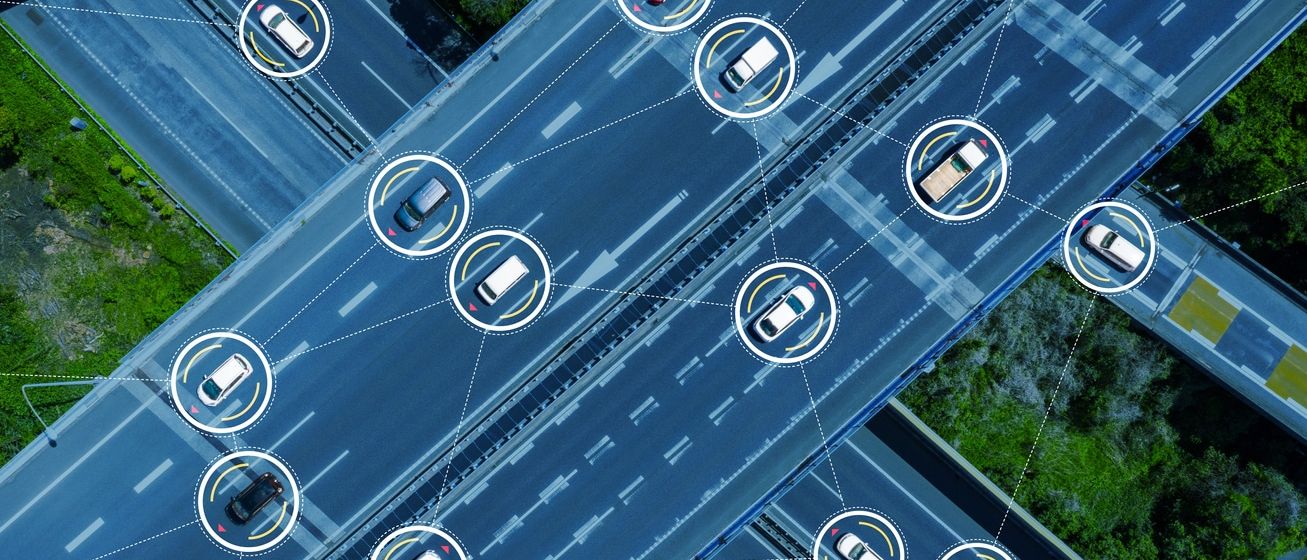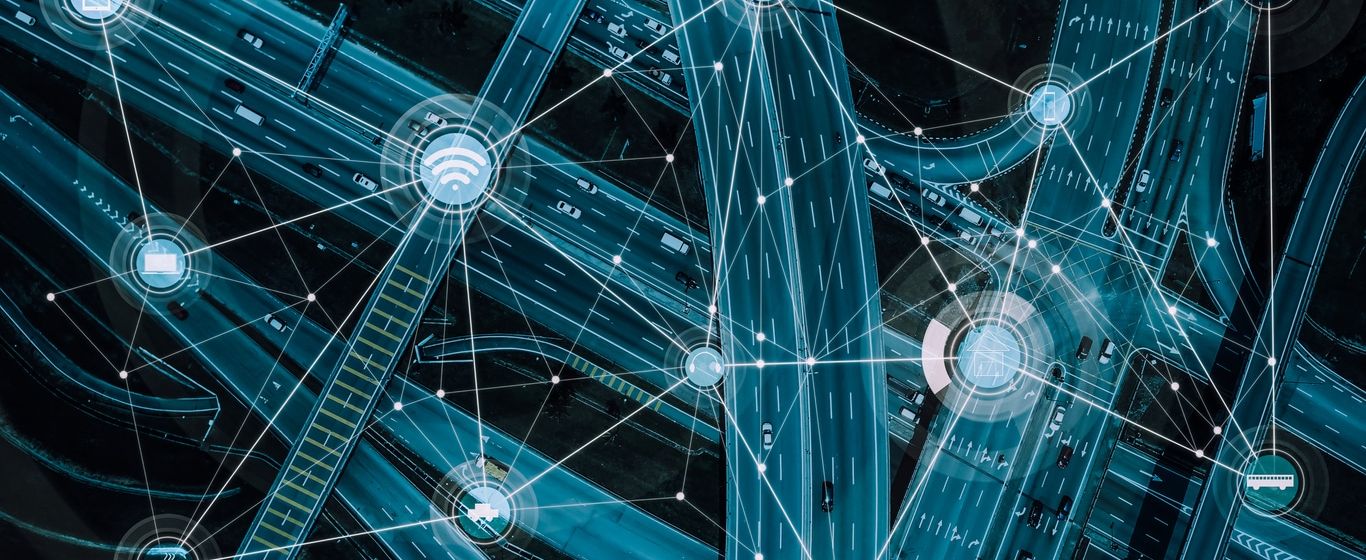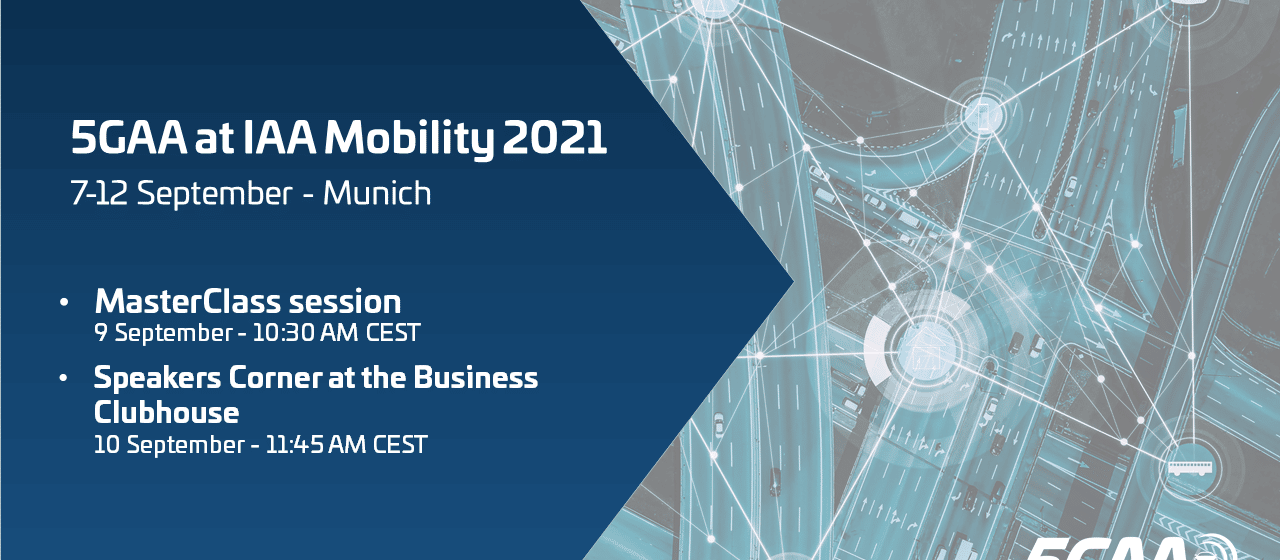
Connected Mobility In Europe: 5G Automotive Association Strives For Digitalized, Sustainable And Safer Roads In The Digital Age
Europe needs a harmonized, future-proof regulatory approach that stimulates innovation and recognizes the industrial timeline and evolutionary path of technologies, conducive of European competitiveness and fostering the development of innovative business models. Innovation through C-V2X technology and sustainability-related opportunities for connected mobility were at the heart of the “5G: Connected Mobility in the Digital Age” conference hosted by the 5G Automotive Association (5GAA).
BRUSSELS (BELGIUM), 29 September 2021 – The 5G Automotive Association (5GAA) organized a conference bringing together EU representatives, public authorities, and the connected automotive ecosystem to the heart of Europe at its latest event, 5G: Connected Mobility in the Digital Age. Main objective? Discuss the ongoing challenges and opportunities brought about by the digitalization of road transport on the continent.
From the latest state-of-play and capabilities of Cellular-Vehicle-to-Everything (C-V2X) to the EU regulatory framework and the importance of the 5G roll-out, the 5GAA-branded conference emphasized the ongoing momentum of the technology in Europe as it supports more and more advanced use cases to ensure safer roads and achieve lower emissions globally.
“When applied to the automotive field, 5G will have the most revolutionary impact by saving millions of lives and reducing accidents on European roads”, 5GAA CTO Maxime Flament said. “The combination of long-range and short-range connectivity C-V2X offers, delivers the optimal setup for safety and efficiency of traffic, in addition to improving environmental footprints. We believe the European Union can achieve its Green Deal climate targets for 2050, if only it boosts the digitalization of its roads – landing a rapid and efficient deployment of 5G along road networks.”
Starting today with LTE-V2X technology, 5G-V2X is paving the way for fully connected and automated mobility. Vehicles and infrastructure can exchange relevant information via LTE-V2X through direct communication mode (not requiring network coverage) or mobile network communications mode, creating a real-time connection between all road users. Many automotive services can be supported by the current global cellular standard LTE-4G, seen as an essential foundation for further progress. As a combination of LTE-V2X and 5G NR, 5G-V2X will enable more advanced connected mobility services and offer a clear path to automated driving – while maintaining service-level interoperability with pre-existing LTE-V2X vehicles. It is thus of utmost importance that the revised Intelligent Transport Systems framework encompasses this tech evolution for Connected and Automated Mobility (CAM) for Europe.
Connected vehicles must reach a critical mass to impact emissions reduction significantly. The Association reiterated that establishing an innovative and investment-friendly regulatory framework that remains technology-neutral will boost Europe’s competitiveness and the number of connected vehicles on the road. As such, a seamless interaction among all stakeholders involved will be pivotal for road operators and public authorities across Europe to meet their policy objectives and enable a smooth service experience across all value-chains – to ensure a smooth 5G roll-out and robust ecosystem cooperation in the global evolving transport ecosystem.
“Our Sustainable and Smart Mobility Strategy sets out milestones for the transformation of our transport system – and Cooperative, Connected, and Automated Mobility will play a key role: by 2030, we expect automation to be deployed at a large scale” stated Commissioner Vălean. “Automation will be a driver to help make 100 European cities climate-neutral by the same date. And we have another important milestone to reach: by 2050, the fatalities for all modes of transport in the EU should be close to zero. Automated mobility is expected to contribute immensely here. My expectations are high, but so is the potential!”
Indeed, the Association had the pleasure to have European Commissioner for Transport Adina-Ioana Vălean open the conference and address the attendees. The event welcomed high-level representatives such as Daniel Mes, Cabinet of Executive Vice-President for the European Green Deal Frans Timmermans, Charlotte Nørlund-Matthiessen, Cabinet of Commissioner for Transport Adina-Ioana Vălean, Member of European Parliament Henna Virkkunen, Peter Stuckmann, DG CONNECT Head of Unit Future Connectivity Systems, the European Cyclists’ Federation (Jill Warren, Chief Executive Office), Spain’s Directorate-General for Traffic (Ana Isabel Blanco Bergareche, Associated Deputy Director), the City of Turin (Nicola Farronato, Head of Innovation) and the Swedish Transport Administration (Hamid Zarghampour, Chief Strategist Connected and Automated Transports). It also witnessed a strong ecosystem presence, with speakers from 5GAA members BMW, Stellantis, Volvo Cars, Ford, HERE Technologies, Telefonica, TIM and Huawei.

5G Automotive Association (5GAA) to participate in the Global Certification Forum (GCF) online conference “C-V2X Certification and the Roadmap to Connected Mobility.”
The 5G Automotive Association (5GAA) is glad to announce its participation to the Global Certification Forum (GCF) webinar “C-V2X Certification and the Roadmap to Connected Mobility” on 6th October 2021, at 4 pm CEST.
The event will bring together industry experts from vehicle manufacturers, equipment vendors, test houses and certification authorities to discuss why certification is key to the effective rollout of C-V2X systems and how it can be implemented successfully now.
Maxime Flament, 5GAA Chief Technology Officer, will hold a session to disclose the current standard landscape and the global market opportunities for connected vehicles. Moreover, he will join a panel discussion on the GCF’s C-V2X certification programme and how it will benefit several actors of the connectivity ecosystem.
High-speed wireless communications between vehicles and infrastructures, especially cellular vehicle-to-everything (C-V2X) communications, are crucial for the development of autonomous vehicles. Proven interoperability between C-V2X devices is essential to ensure the safety and reliability of such systems.
Since 2019, 5GAA and GCF have been collaborating to investigate the principles and framework for a certification programme – designed specifically for C-V2X technologies. A few months ago, the two partners went one step further by signing a new agreement on a programme that will support the drive for interoperability, reliability, and safety of emerging cellular vehicle-to-everything (C-V2X) systems. A programme that will enable manufacturers to certify their C-V2X capable products – including onboard units (OBU) and roadside units (RSU) – for C-V2X PC5 Mode 4 functionality, thus providing a trusted foundation for C-V2X applications globally.
Join the webinar to discover more about the progress to the full interoperability, reliability and safety of emerging C-V2X systems.
More information and agenda of the event here.
Registration here.

Tele-Operated Driving (ToD): System Requirements Analysis and Architecture
Tele-Operated Driving (ToD) technology assists, complements and accelerates semi- and fully automated driving in various scenarios. This 5GAA technical report studies system requirements and corresponding enabler technologies for ToD services using Cellular-V2X (C-V2X) networks. The study covers the vehicle sub-system, ToD operator sub-system, infrastructure sub-system, and C-V2X networks for end-to-end deployment of ToD services. System application layer architectures and the underlying communication network architectures for different ToD use cases and scenarios are presented in this study with the focus on interfaces among different stakeholders and with considerations on service interoperability in multi-OEM, multi-Service Provider, multi-RTA and multi-MNO environments. This study also envisages that market deployment of ToD services will follow a multi-stage roadmap, starting from confined areas, then evolving into dedicated public roads and areas, and finally covering cross-region (long-haul) mobility of automated vehicles.

5G Automotive Association Organises Conference on 5G: Connected Mobility in the Digital Age
To advance the dialogue between high-level institutional and industry stakeholders on current challenges in the field of connected and automated mobility, the 5G Automotive Association (5GAA) is organising an online conference on 28 September 2021, from 9:15 am to 3:00 am CEST.
Representatives from the European institutions, local and national authorities as well as 5GAA members will discuss ongoing challenges for connected and automated mobility and provide solutions by presenting the capabilities and deployment models of the Cellular-Vehicle-to-Everything (“C-V2X”) technology.
AGENDA
Please see the full agenda here.
09:15 – 09:30: Connected Mobility in the Digital Decade
09:30 – 10:15: 5GAA C-V2X visionary roadmap 2030
10:15 – 11:00: The global progress of C-V2X
11:00 – 11:15: Coffee Break
11:15 – 12:15: Panel discussion: Digitalisation of road transport – Quo Vadis, Europe?
12:15 – 13:00: Lunch Break – Exhibition booths
13:00 – 14:00: The path towards road digitalisation
14:00 – 14:45: Panel discussion: Connected Mobility for climate neutrality
14:45 – 15:00: Closing keynote speech
SPEAKERS INCLUDE
- Francesco Lilli, Automotive Research and Advanced Engineering, Global Head of Advanced Connectivity, Stellantis
- Bernardo Campillo Soto, Head of Industry Analysts and Ecosystem, Telefonica
- Wang Xuemin, Vice-President for Standardization & Industry Development, Huawei
- Jovan Zagajac, Product Group Manager, Enterprise Connectivity, Ford Motor Company
- Charlotte Nørlund-Matthiessen, Cabinet of Commissioner for Transport Adina-Ioana Vălean, European Commission
- Johannes Springer, Lead of 5G automotive program, Deutsche Telekom
- Ana Isabel Blanco Bergareche, Directorate-General for Traffic, Spain
- Stephan Durach, Senior Vice President – Connected Company Development, BMW
- Bart Sweerman, Senior Vice President, Services, HERE Technologies GmbH
- Peter Stuckmann, Head of Unit – Future Connectivity Systems, DG CONNECT, European Commission
- Daniele Franceschini, Head of Technology Innovation, Standardization & Portfolio Department, TIM
- Hamid Zarghampour, Chief Strategist, connected and automated transports, Swedish Transport Administration
- Nicola Farronato, Head of Innovation, City of Turin
- Daniel Mes, Member of Frans Timmermans’ Cabinet, European Commission
- Marie Högberg, Head of Connectivity Strategy, Volvo Cars
- Jill Warren, Chief Executive Office, European Cyclists’ Federation
If you have any questions, please get in touch at marcom@5gaa.org

Vehicular Antenna Test Methodology
The rising demand for connected vehicles as well as the ongoing deployment of vehicle-to-vehicle communication has shown that a unified measurement procedure for the communication subsystem antenna can add benefits for the development of vehicular communication systems. A unified measurement procedure for vehicular antennas (antennas permanently mounted on vehicles) will also ensure conformity assessments of the various regional standards are handled transparently.
5GAA, as an alliance connecting the automotive and telecom domains, developed a methodology to test vehicular antennas for communication and associated aspects (e.g. GNSS). Such a methodology can act as a commonly agreed test procedure for antenna communication subsystems. It is also expected to improve the accuracy of conformity assurance procedures for such vehicular systems.
Read the full report, here.

MEC4AUTO: Use Cases and initial test specifications review
Mobile Edge Computing (MEC) is a key enabler of several Cellular Vehicle-to-Everything (C-V2X) applications that require ultra-low latency and high reliability.
This document analyses the C-V2X Use Cases, in particular those defined by 5GAA WG1, that require the processing of large amounts of data and could benefit from the use of MEC instead of uploading the data to the cloud, which could cause additional round trip delays. The selection of Use Cases is based on inputs from auto OEMs and their key requirements about interoperability between different Mobile Network Providers (MNPs), different vehicle OEMs and different C-V2X application providers
Read the full technical report here.

5GAA to Participate to ITS WORLD CONGRESS 2021 in Hamburg, Germany
The 5G Automotive Association (5GAA) is very pleased to participate in the European edition of the ITS World Congress and to be part, alongside its members, of the discussion with global stakeholders in the field of connected mobility. This year, the event will take place from 11 to 15 October 2021 in Hamburg and will allow to “Experience Future Mobility Now.”
ITS World Congress is the world’s largest and most prominent event focused on smart mobility and the digitalisation of transports. It aims to underline the importance of Intelligent Transport Systems (ITS) and raise awareness of smart mobility solutions among policy makers, experts, and the general public. It will be a great opportunity to present the latest developments in ITS and enjoy networking opportunities.
Smart mobility and Intelligent Transport Systems (ITS) are crucial constitutive elements of 5GAA, as the association helps shape technological advances in the field. Cooperative Intelligent Transportation Systems (C-ITS) are the technologies associated with connected vehicles. These technologies, enabled by wireless transactions (V2X), would have a crucial impact on road safety and traffic efficiency. 5GAA supports the idea that 5G will be the ultimate platform to enable C-ITS and the provision of V2X.
5GAA and its members will be involved in different activities.
- During the event, we will have a booth where both industry and media visitors can learn more about 5GAA’s action to foster connected mobility.
- On 13 October, from 2 to 3 pm CEST we will host a press tour, moderated by Roger Lanctot, which will focus on concrete examples of C-V2X solutions as shown by 5GAA member demonstrations and booths. The members featured in the tour will be Qualcomm, Bosch, Telefonica, Deutsche Telekom & Continental, Novatel/Hexagon, Fraunhofer Institute FOKUS.
- 5GAA will also organise a workshop on “Connecting to Future Mobility”, from 9 am to 12 pm CEST, in Room X10 of the Congress Centre, followed by a networking lunch. The session will be a great opportunity to discuss the acceleration of C-V2X deployment and future-proof investments in digital infrastructure, compare the specifics between road corridors and urban areas, and to exchange about digital mobility services at large.
The discussion will outline the cooperation models enabling the deployment and use of 5G infrastructures for connected and automated mobility. The workshop aims at bridging representatives of national, regional & local road authorities and operators together with industry representatives.Register here to attend the event.

5GAA to participate in IAA Munich Mobility Conference 2021
The 5G Automotive Association (5GAA) is proud to announce its participation in the IAA Mobility Conference 2021 that will take place from 7 to 12 September in Munich. IAA Mobility is the leading global platform for the mobility industry and brings together actors from the entire mobility chain.
Following the guiding theme “What will move us next” the discussion will focus on how automation, connectivity, and smart city solutions will drive our progression to a more sustainable and effective mobility.
The event will provide an excellent platform to discuss the future of mobility with relevant stakeholders of the transport ecosystem.
5GAA will be active at two occasions:
- 9 September 2021 10.30 AM CEST
5GAA will hold a Master Class session. A great opportunity to engage in cross-industry exchange, present our expertise in an educational format, and discuss last updates and automated mobility by demonstrating the capabilities and deployment models of the Cellular Vehicle to Everything (“C-V2X”) technology.
- 10 September 2021, 11.45 AM CEST
5GAA will be present with its own Speaker Corner in the Business Club House, located in the central area of the exhibition. During 90 minutes our association and its members will have the opportunity to have speakers discuss the latest topics on connected mobility, as well as enjoy networking opportunities.
More details on the content of the sessions will come in the following weeks.

Tele-Operated Driving (ToD): Business Considerations
The 5GAA cross-working group work item Tele-operated Driving (ToD) aims to describe the requirements and framework needed for remote vehicle operation. The proposed results should reliably enable remote steering and manoeuvring including a human remote driver with both Direct and Indirect Control in an OEM-agnostic, inter-MNO and cross-authority operation. The intention of this work item is to study both use case and scenario definition, technical design, and business considerations. This document focuses on business considerations and aspires to identify the different elements that should be taken into account when considering the deployment of a ToD ecosystem from a business perspective.
Read the full technical report here.

Safety Treatment in V2X Applications
This White Paper describes the new challenges in the treatment of functional safety arising from the introduction of connected and distributed functions, which are typical for cellular vehicle-to-everything (C-V2X) applications. A dedicated 5GAA technical working group performed a detailed analysis to determine, propose, and evaluate possibilities for mobile network operators, vendors, and any further identified stakeholders to provide vehicle original equipment manufacturers (OEMs) what they need to treat safety in new use cases enabled by C-V2X technologies.
Read the full White Paper here.


